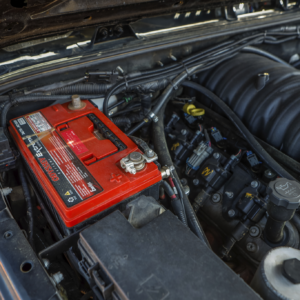Tetraethyllead or TEL used to be a gasoline additive to give fuel a higher octane rating. Using gasoline with a higher octane rating allowed vehicle engines to run more efficiently and reliably with less engine knock. TEL also lubricated valve seats and prevented premature wear in older engines. However, adding TEL in gasoline released lead into the atmosphere, which was incredibly toxic. TEL was known to cause cancer, lead poisoning, learning disabilities, and even birth defects, among other health risks.
The US slowly shifted to unleaded gas during the ’70s. Eventually, leaded gas was completely banned by 1996. However, the absence of lead raised concerns over engine reliability, as older vehicles were designed to run on leaded fuel.
Why Was Lead Necessary?
Lead specifically minimized wear on a vehicle’s valves and valve seats, as the valves were known to hammer the valve seats thousands of times per minute. The extreme conditions inside the engine could cause the valve and valve seats to fuse momentarily. However, this connection is immediately torn apart as the valve moves. As this happens so many times, the valve can eventually no longer create a seat, which can cause the engine to lose power. In a worst-case scenario, the valve can even break off.
Since leaded gasoline was banned, what is a lead substitute for gasoline? Lead substitutes were developed to replicate the lubricating properties of lead and protect the valve and valve seats.
What Is Lead Substitute?
Lead substitutes are made from a blend of lubricating agents and additives based on manganese, sodium, phosphate, or iron. These agents are designed to mimic the lubricating properties of lead inside an engine. The lead substitutes essentially coat valve seats and other internal components with a lubricant to reduce friction and minimize wear during combustion.

Are Lead Substitutes Necessary?
While lead substitutes can serve a crucial purpose in older engines, they aren’t always needed.
Old vehicles that rely on lead gasoline can be modified with hardened valves and cylinder heads that can withstand the heat and pressure inside the engine.
At the same time, there’s a debate within the automotive community about whether lead substitutes or upgrading engines are even necessary. Many vehicle owners report that upgrading vehicle engines and adding lead substitutes are unnecessary and that running regular 93-octane fuel is sufficient. Moreover, many vehicles made after the mid-1960s were already equipped with hardened valve seals. However, some engine builders will insist that putting hardened valve seats is still a good idea when the cylinder heads are serviced.
Others argue that vehicles that would have had problems with unleaded fuel would have already been damaged in the ’70s and ’80s.
Generally, running an old engine on modern gas without lead substitutes isn’t that detrimental. But many classic car owners still prefer to be on the safe side and use lead substitutes. After all, there aren’t any drawbacks to using lead substitutes. Plus, their low cost and ease of use give vehicle owners peace of mind for a small price.
Any information provided on this Website is for informational purposes only and is not intended to replace consultation with a professional mechanic. The accuracy and timeliness of the information may change from the time of publication.



























